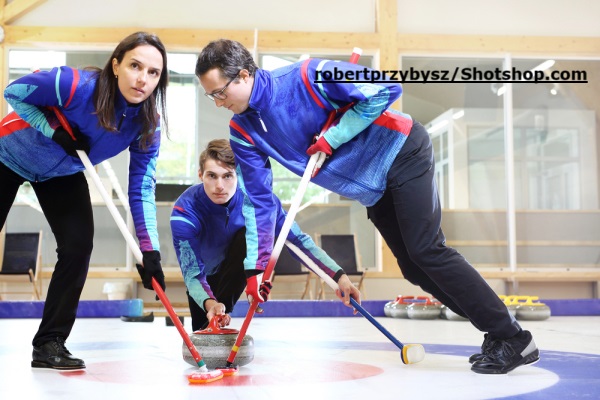
Curling is a sport that combines skill and strategy, boasting a rich history that dates back to the early 16th century in Scotland. Its unique blend of precision and teamwork has captivated players and spectators alike, making it a beloved winter sport around the globe. In this exploration, we will delve deep into the origins, evolution, and cultural significance of curling, as well as its growing popularity and the community that surrounds it today.
Origins In Scotland
The earliest records of curling can be traced back to Scotland, where it was played on frozen ponds and lochs during the winter months. The game involved sliding heavy stones across the ice towards a target area, known as the “house.” The stones were initially made of natural materials, often granite, and players would use brooms made of straw or other materials to influence the stone’s trajectory and speed.
By the 16th century, curling had become a popular pastime among the Scottish nobility and commoners alike, fostering a sense of camaraderie and competition. The first recorded mention of curling appeared in a 1541 painting by Pieter Bruegel The Elder, which depicted peasants engaged in the sport. This artwork not only highlights the game’s early roots in Scottish culture but also illustrates its social aspect, where curling was often a communal activity.
The Evolution Of Curling
As the centuries progressed, curling evolved from a casual pastime into a more structured sport. The first official rules of curling were established in 1838, which marked a significant turning point in its history. These rules helped standardize the game, paving the way for the creation of curling clubs and formal competitions. The formation of the Grand Caledonian Curling Club(now known as the Royal Caledonian Curling Club) in 1838 in Scotland further solidified the sport’s structure and laid the groundwork for its expansion beyond Scotland.
Curling clubs began to spring up across Scotland, providing enthusiasts with dedicated spaces to practice and compete. These clubs became centers of social activity, where players of all skill levels could come together to share their passion for the game. The sport’s organizational framework continued to develop throughout the 19th century, culminating in the establishment of national championships and international competitions.
Curling’s Global Expansion
As curling gained popularity in Scotland, it began to spread to other countries, particularly Canada, Sweden, and Switzerland. Each nation embraced the sport in its own unique way, contributing to the development of distinct styles and strategies. In Canada, for instance, curling became a national pastime. The Canadian Curling Association(now known as Curling Canada), founded in 1990, played a pivotal role in promoting the sport in North America, leading to the establishment of numerous leagues and tournaments.
Canada‘s passion for curling is evident in the sheer number of participants; today, millions of Canadians engage in the sport at various levels, from casual play to elite competition. The highlight of the Canadian curling calendar is the Montana’s Brier, the national men’s championship, which attracts top teams from across the country and showcases the best of Canadian curling talent. In Sweden, curling has also gained immense popularity and Switzerland has a rich history within the sport as well.
The Formation Of International Competitions
The rise of curling on the international stage culminated in the establishment of the World Curling Federation (WCF) in 1966. The WCF is today simply known as World Curling. This organization was formed to promote the sport globally, organize international competitions, and establish standardized rules. The first World Curling Championships took place in 1959, featuring men’s teams from Canada and Scotland. The success of these championships laid the groundwork for the inclusion of curling in multi-sport events, such as the Winter Olympics.
Curling made its Olympic debut as a demonstration sport at the 1932 Winter Olympics in Lake Placid, New York. However, it wasn’t until the 1998 Winter Olympics in Nagano, Japan, that curling was officially included as a medal sport. This milestone brought increased visibility and recognition to the sport, leading to a surge in participation worldwide.
Today, curling is a regular feature of the Winter Olympic Games, with both men’s and women’s competitions. The Olympic stage has showcased thrilling matches and dramatic moments, further cementing curling’s place in the hearts of winter sports enthusiasts. The intense competition and sportsmanship displayed by athletes have captivated audiences, drawing new fans to the sport.
The Unique Aspects Of Curling
What makes curling truly unique is its combination of physical skill, mental strategy, and teamwork. Unlike many sports, curling is played on a sheet of ice, requiring players to master the art of sliding stones while navigating the nuances of ice conditions. The sport emphasizes precision, as players must carefully calculate the weight and angle of their shots to achieve their desired outcome.
Sweeping, a distinctive aspect of curling, plays a critical role in the game. Players use brooms to sweep in front of the sliding stone, which helps to reduce friction and control the stone’s speed and direction. This action is not only crucial for the success of the shot but also adds an element of teamwork, as players must communicate effectively to coordinate their efforts.
The strategic nature of curling is another aspect that sets it apart. Teams must develop game plans, analyze their opponents, and make quick decisions based on the evolving dynamics of the match. The strategy can vary widely depending on the ice conditions, the position of the stones, and the strengths and weaknesses of each team. As a result, curling is often likened to chess on ice, where every move is calculated and every decision can have significant consequences.
The Community And Culture Surrounding Curling
Curling is not just a sport; it is a community that fosters friendships and connections among players and fans. Many curling clubs prioritize inclusivity and accessibility, welcoming individuals of all ages and skill levels. This emphasis on community has made curling a popular choice for social events, corporate outings, and family gatherings.
The atmosphere at curling clubs is often warm and inviting, with players sharing stories, experiences, and tips on improving their game. Many clubs offer beginner clinics and instructional sessions, allowing newcomers to learn the fundamentals of curling in a supportive environment. This commitment to fostering new talent ensures that the sport continues to grow and evolve.
In addition to its recreational aspects, curling has a rich tradition of sportsmanship and camaraderie. Players often shake hands before and after matches, demonstrating respect for their opponents and the spirit of fair play. This ethos is encapsulated in the concept of “the spirit of curling,” which emphasizes honesty, integrity, and mutual respect among players.
Curling Today And Its Future
As curling continues to grow in popularity, the sport has also evolved with the times. Technological advancements have improved the equipment used in curling, from high-quality stones to specialized shoes and brooms. These innovations have enhanced the performance of players and contributed to the overall professionalism of the sport.
Moreover, the advent of social media and live streaming has allowed curling to reach a broader audience than ever before. Fans can now follow their favorite teams and players, watch live matches, and engage with the curling community online. This increased visibility has attracted new participants and sponsors, further solidifying curling’s place in the sports landscape.
Conclusion
The history and formation of curling are a testament to its enduring appeal as a sport that transcends generations and cultures. From its humble beginnings on Scottish ponds to its status as a global phenomenon, curling has captured the hearts of millions. Its unique combination of skill, strategy, and community spirit makes it a captivating sport for players and fans alike.
If you’re intrigued by curling and want to learn more about its techniques or how to get involved, consider visiting your local curling club or participating in a beginner’s clinic. Curling is a sport that welcomes everyone, regardless of skill level, and offers a fantastic community experience. Embrace the excitement of this unique game and discover why curling has captured hearts around the world! Whether you are a seasoned player or a curious newcomer, the world of curling awaits you—join in the fun and experience the camaraderie and competition that makes this sport truly special.
